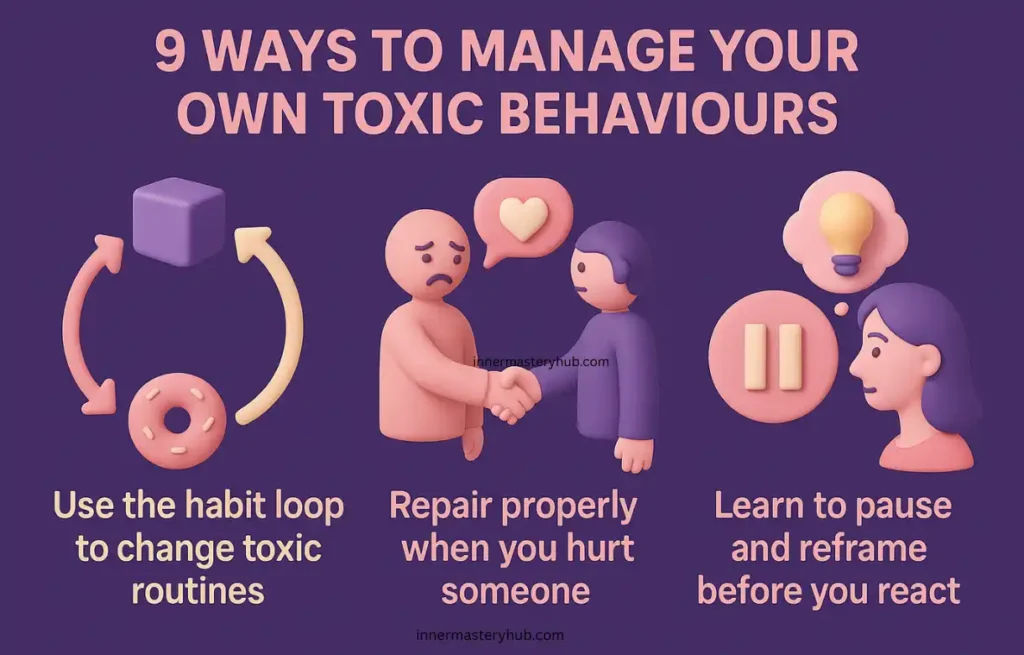Can Powerful Healing Writing Prompts Replace Costly Therapy

Healing Writing Prompts Reveal a Hidden Weight
Many people hold unspoken emotions, as I have seen. You get up, browse, hurry, and say nothing about the pain that persisted for months, the parenting uncertainty, or the job letdown.
According to research, unexpressed stress increases heart-rate variability, impairs immunity, and is associated with increased health care utilization. Compared to their peers who write expressively, employees who never reflect in their writing exhibit higher cortisol levels and lower job satisfaction, according to a meta-analysis on work stress
Unspoken Feelings Attack Body and Mind
Research presents the expense in glaring figures. According to a randomized study involving 37 persons with HIV, four quick emotive writing sessions increased CD4 levels, but the control group experienced no immunological benefit (PubMed).
According to another 2024 systematic analysis, 21 out of 31 clinical trials found a meaningful decrease in depressive scores and even suicidal ideation when participants engaged in creative writing (ResearchGate).
When compared to usual care, expressive writing cut depression had a standardized mean difference of -0.65, according to a 2025 meta-analysis on postpartum mothers (PubMed). Inflammation increases and mood declines when emotions are suppressed; when emotions are expressed, mood and physiology reverse.
Healing Writing Prompts Turn Inner Noise Into Organized Thought
Why Healing Writing Prompts Work
A story framework lowers rumination, repeated sessions develop cognitive reappraisal skills, and language helps the brain identify emotion, which soothes the amygdala, according to research by Pennebaker and subsequent teams (PubMed Central).
According to a 2024 study including foreign medical students, writing about pleasant emotions for 8 weeks reduced anxiety and improved well-being more than regular counseling alone (BioMed Central).
After just 15 minutes, state anxiety was even reduced by one online self-compassion exercise (PubMed Central). The routine is straightforward: you, a pen, and a clear cue. The evidence keeps mounting.
How to Prepare Your Writing Space
You can use a keyboard or any paper; I keep a simple notebook. A timer is set for fifteen to twenty minutes. Notifications are silenced. You write the date at the beginning of each session so that progress may be seen afterward. You reduce self-censorship by keeping pages private. Privacy boosts benefits and honesty, according to research (PubMed Central).

Seven Healing Writing Prompts You Can Use Tonight
I use the same prompts in workshops. You can copy them or tweak wording. Each one follows a simple structure: situation → feelings → meaning → next small step. I show an everyday example so you can see the application.
- “Describe the hardest conversation you avoided this week.”
Example. I wrote about delaying feedback to a colleague. I noted the knot in my stomach, saw the fear of conflict, and planned a three-sentence opener for tomorrow. - “Recall a recent success and list what it cost you.”
Example. You might write about passing an exam but sacrificing sleep; seeing the cost helps you plan recovery. - “Write a letter you will never send to someone who hurt you.”
Example. A participant wrote to a high school bully, shredded the page, and reported feeling lighter. - “Finish the sentence: ‘My body tries to tell me ___.'”
Example. I finished with “slow down when my jaw tightens,” then scheduled stretch breaks at work. - “List three beliefs about yourself that feel outdated.”
Example. You might replace “I must be perfect” with “I must be present.” - “Describe a place that makes you feel safe, using all five senses.”
Example. One client wrote about her grandmother’s kitchen and used the image before medical scans. - “Imagine it is one year later and things went well; write the headline of your life.”
Example. I once wrote “Dad Works Shorter Hours, Plays Longer Games,” then blocked family time on Sundays.
How to Track Progress With Healing Writing Prompts
On a scale of 1 to 10, please rate your mood before and after each session. By wearing a tracker, you can record your sleep duration, resting heart rate, or number of steps. Research indicates that when individuals record these objective markers, they observe relationships and continue to write for longer (Frontiers).
You examine early posts after four weeks and note any changes, such as shorter sentences, new vocabulary, and more solution words. You can see the change without using linguistic analysis methods like LIWC, which show that more positive emotion words are predictive of greater health gains.
100 Unique Healing Writing Prompts
Describe a childhood place that still feels safe and explain why.
Write a letter of gratitude to your current body for carrying you.
List three emotions you felt today and trace each to its source.
Recall a recent conflict and note one lesson it taught you.
Finish the sentence: “When my chest tightens, my mind is telling me…”.
Describe a moment you forgave yourself and how it changed your day.
Write dialogue between fear and courage inside you right now.
List five things you thought were true about yourself at age ten; update each.
Recall a sound that calms you and paint it with words.
Describe a time you felt fully seen by another person.
Write a note to a future self one year from now, offering advice.
List habits that drain energy and brainstorm one gentle alternative for each.
Recall a mistake you keep replaying and rewrite the ending with self-compassion.
Describe the first scent you remember and the feeling it evokes.
Finish the line: “My body celebrates when I…”.
Write a goodbye letter to an outdated belief.
List hidden strengths that your friends notice in you that you overlook.
Recall a moment of unexpected kindness and explore its ripple effect.
Describe the color of today’s mood and explain your choice.
Write about a boundary you need and script how you’ll voice it.
List three ways nature mirrors your emotional cycles.
Recall a song tied to a painful memory and reframe the lyric for healing.
Please describe how your breathing changes under stress and what helps it steady.
Finish the sentence: “If my inner critic had a name, it would be…”.
Write a pledge to your younger self for protection and care.
List small victories from this week that went unnoticed.
Recall a dream you remember vividly and explore its message.
Describe a meal that comforts you and the story behind it.
Write the headline of your life five years after overcoming a current struggle.
List the roles you play daily and note which need more support.
Recall a time silence felt restorative and examine why.
Describe a season that matches your healing pace and detail the parallels.
Finish the line: “My body whispers warnings when…”.
Write a permission slip for rest and pin it in words.
List three compliments you struggle to accept and unpack the resistance.
Recall a book that changed your outlook and identify the key sentence.
Describe the physical weight of stress in one body part, then imagine release.
Write about an apology you never received and gift it to yourself.
List memories that spark joy in under five seconds each.
Recall a risk you took that paid off and map the steps.
Describe a flower or plant that reflects your growth journey.
Finish the line: “When I share my story, I hope others feel…”.
Write a dialogue between your morning self and evening self.
List tasks you perform on autopilot and note emotions beneath them.
Recall a family tradition you cherish and why it endures.
Describe the sky at a memorable turning point in life.
Write about a social expectation you are ready to release.
List the signs your body gives when it needs movement.
Recall a farewell that still hurts and offer closure in words.
Describe an everyday object that symbolizes resilience for you.
Finish the sentence: “I find peace when my hands…”.
Write a love letter to the part of you that feels most vulnerable.
List sounds that instantly ground you and where to find them.
Recall a promise you kept to yourself and its impact.
Describe the sensation of hope as if explaining to a child.
Write about a time you misread someone’s intent and what you learned.
List five future memories you want to create and why.
Recall a teacher—formal or informal—who shaped your healing.
Describe how morning light enters your room and what it symbolizes.
Finish the line: “I forgive myself for believing…”.
Write a script for a five-minute daily self-check-in.
List qualities you admire in strangers and see if you share any.
Recall a myth you once believed about success and debunk it.
Describe the texture of trust using metaphors.
Write about a habit you dropped and the space it opened.
List questions you wish people asked you more often.
Recall a journey—literal or emotional—that proved transformative.
Describe your favorite quiet corner and why it feels safe.
Finish the sentence: “When I speak my truth, my body feels…”.
Write advice you’d give a friend facing your current challenge.
List items you would place in a personal time capsule and the reasons.
Recall a cultural story that guided you and reassess its relevance.
Describe the taste of relief after settling a worry.
Write about a boundary you respected in someone else and its effect.
List ways you celebrate small wins without spending money.
Recall a scent linked to a turning point and unpack the memory.
Describe the night sky on your most hopeful evening.
Finish the sentence: “If fear stepped aside today, I would…”.
Write a farewell note to procrastination.
List five supportive phrases you rarely tell yourself.
Recall a moment of intuitive knowing and how you responded.
Describe a bridge—real or imagined—that mirrors a transition in your life.
Write about a cultural expectation you choose to keep and why.
List cues that signal approaching burnout for you.
Recall an artwork that stirred emotion and analyze the trigger.
Describe the rhythm of your ideal restful day.
Finish the sentence: “Joy knocks on my door when…”.
Write an anecdote highlighting your quiet courage.
List gifts you can offer the world that cost nothing.
Recall a lesson learned from failure and put it into one sentence.
Describe a color gradient that maps your healing progress.
Write a note from your future healed self to your present self.
List songs that capture distinct phases of your journey.
Recall a spontaneous act that uplifted you and its lasting effect.
Describe how your body feels after genuine laughter.
Finish the sentence: “The story I’m rewriting today is…”.
Write about a ritual—new or old—that anchors you.
List three truths you discovered through solitude.
Recall a weather event that mirrors your emotional storm and aftermath.
Describe how you will know you have healed further one year from now.
What to Do When Writing Hurts
Some prompts reveal trauma. You honor your boundaries. If the level of distress rises above 7/10, you stop. To ground oneself, you name five items in the space. Call a friend you can trust, or use the sensory safety suggestion instead. Empirical studies demonstrate that expressive writing is safe and beneficial through titration and timing rather than unrefined catharsis (PubMed).
Moving Beyond the Common Journal
I want you to notice two less-discussed angles:
- Use prompts at work. I give teams five-minute “shutdown scripts” in which they write one statement about a victory, one about a concern, and one about the next step. Teams report fewer emails after supper and more defined boundaries.
- Pair writing with movement. Combine movement and writing. One graduate student typed responses to Prompt 4 that she had dictated while out for a walk. Weeks later, she said she had less back discomfort and a deeper understanding of her body.
These twists keep the tool novel and suit different learning styles.
What You Now Hold
I pointed out to you the issue: silent emotions are bad for your health. I brought up the topic using information from student, postpartum, and immunological research. I came up with the answer: scientifically based, everyday-use writing prompts for therapeutic purposes.
You gained knowledge of progress tracking, safety regulations, seven concrete prompts, and setup procedures. You observed distinct variances in the workplace and movement. A low-cost, evidence-based technique to transform stress into structured words and structured words into strength is now in your own hands. Your notebook is ready for you to choose one prompt tonight.
Frequently Asked Questions about Healing Writing Prompts
What are healing writing prompts?
“Healing writing prompts” are focused questions or sentence starters that guide you to explore emotions, memories, and beliefs on paper, process stress, clarify thoughts, and gain insight. They turn vague feelings into organized narratives, which studies link to lower anxiety, stronger immunity, better mood, and lasting growth.
How do healing writing prompts improve mental health?
Prompts cause narrative coherence, emotional categorization, and cognitive reappraisal. Expressive writing decreases cortisol, increases heart-rate variability, and lessens depression symptoms, according to a clinical study. After repeated practice in everyday life, structured reflection helps the brain integrate events, leading to calmer physiology and more lucid decision-making.
How do I start using healing writing prompts each day?
Set a timer for twenty minutes, pick a prompt, and write without editing. Note your physical condition, date the entry, and then tell the truth until the end of the allotted time. To overcome self-censorship, keep the journal confidential. Finally, assign a mood rating. To create a solid habit everywhere, repeat every day or at times of high stress.
How long should I write with healing prompts for real benefits?
Research suggests that fifteen to twenty minutes per session on three to five consecutive days yields noticeable physiological and psychological gains. Longer sessions deepen processing, yet brief, consistent writing prevents fatigue while enhancing self-regulation, emotional clarity, and sleep within a fortnight of steady practice and wellness.
What are three strong examples of healing writing prompts?
Examples: “Write a letter you’ll never send to someone who hurt you,” “List beliefs about yourself that feel outdated,” and “Finish the line: ‘My body tries to tell me…’.” Each focuses attention on emotion, meaning, and action, activating insight and planning in practical everyday personal life practice.
Can healing writing prompts replace professional therapy?
Prompts complement but do not replace therapy. They provide affordable self-care between sessions, reinforce counseling insights, and empower reflection. Severe trauma, suicidal thoughts, or complex conditions still require professionals; prompts become one tool within a broader evidence-based treatment strategy, not a complete standalone substitute solution.
What pitfalls should I avoid when journaling for healing
Avoid pushing past emotional overwhelm; stop if distress exceeds seven on a ten-point scale. Don’t obsess over grammar. Silence digital distractions. Refrain from sharing raw entries online before reflection to protect intimacy, prevent misunderstanding or unwanted judgment from others worldwide, and preserve privacy.
How often should I revisit old entries from healing prompts?
Revisiting entries monthly reveals progress and patterns without trapping you in past pain. Highlight shifts in language, mood ratings, and resolved issues. Too-frequent rereading may reignite rumination; waiting several weeks balances reflection with forward movement, reinforcing growth while keeping current goals and emotional needs in clear focus for daily living.
Do healing writing prompts help with trauma and PTSD?
Controlled trials on veterans, assault survivors, and disaster victims show prompt-guided expressive writing decreases PTSD intrusion scores and hyperarousal, sometimes matching cognitive-processing therapy for mild cases. Though not a cure for complex trauma, prompts provide a safe, flexible adjunct supporting gradual emotional integration and resilience.






